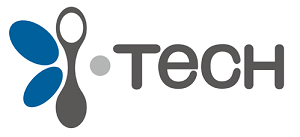In today’s fast-paced digital world, the convenience of accessing financial services through mobile applications is revolutionizing how we think about lending. The future of lending lies in apps, reflecting a fundamental shift in the financial sector’s landscape. As traditional banking models adapt to meet growing consumer expectations, loan apps are at the forefront of a revolution that combines accessibility, efficiency, and innovation.
The Rise of Loan Apps: Exploring a Digital Solution
The steady rise of loan apps is a testament to the unrelenting demand for quicker, more accessible financial solutions. With the proliferation of smartphones and the internet, consumers now have the allure of obtaining loans with just a few taps on their devices. This ease of access is creating waves in the traditional banking system, leading to a paradigm shift where financial technology, or FinTech, is setting new standards for service delivery.
The traditional lending process often involved a mountain of paperwork, strict eligibility criteria, and a lot of waiting. The hustle and bustle of today’s lifestyle demanded a more streamlined approach. Enter loan apps, offering everything from instant personal loans to micro-loans without the hassle. They cater to various financial needs, making lending more inclusive and satisfying an ever-burgeoning market.
The Technological Backbone: How Apps Transform Lending
Artificial Intelligence and Machine Learning
One of the most compelling features of modern loan app is the integration of Artificial Intelligence (AI) and Machine Learning (ML). These technologies enable apps to assess creditworthiness through alternative data such as social media activity and purchase patterns. This process ensures more people have access to credit, even those without a traditional credit history.
AI-driven algorithms can analyse vast amounts of data in a fraction of the time taken by traditional methods, enabling a more personalized lending experience. Imagine how an AI in a loan app can instantly evaluate a borrower’s request, providing a tailored interest rate and approval terms. Such technology enhances decision-making, reduces risk, and streamlines approval processes.
Blockchain: Ensuring Secure Transactions
Blockchain technology is another cornerstone in reimagining lending. By providing a secure, transparent, and decentralised ledger, blockchain ensures that all transactions and borrower information remain immutable and verifiable. This enhances trust between lenders and borrowers, essential in a domain where reputation and reliability are paramount.
Automation and User Experience
Automation is at the heart of loan apps, simplifying the entire process from application to disbursement. Modern apps are designed with intuitive interfaces, ensuring even those with minimal technological know-how can navigate loan requests with ease. Seamless user experience, coupled with speedy service, makes loan apps an attractive alternative, particularly for tech-savvy millennials and Gen Z populations.
New Frontiers: The Future of Loan Apps
Financial Inclusion and Accessibility
The future landscape of loan apps is predicated on expanding financial inclusion. These apps are uniquely positioned to reach the unbanked and underbanked segments of society, offering financial services to those previously excluded from traditional banking. By breaking down geographical and economic barriers, loan apps contribute significantly to poverty alleviation and economic growth.
Integration of Sustainable Lending Practices
With a broader global emphasis on sustainability, the future of loan apps may also hinge on promoting eco-friendly and socially responsible lending practices. Apps could offer incentives for loans that support green projects or sustainable business practices. This aligns with a growing consumer consciousness around environmental and social issues, reflecting a trend towards ethical financial products.
Advanced Credit Scoring Models
As technology evolves, so will credit scoring models. Future loan apps are expected to incorporate even more advanced factors in their assessments, including non-financial indicators such as educational background and employment history. This shift towards a holistic view of creditworthiness will open avenues for more inclusive lending.
Navigating Regulatory Challenges
Embracing Regulatory Changes
As with any technological advancement, loan apps must navigate a complex sea of regulatory frameworks. It is imperative that they align with existing financial regulations while advocating for new policies that support innovation. Regulatory bodies worldwide are increasingly focusing on data protection and consumer rights, which loan apps must heed to maintain consumer trust and industry credibility.
Enhancing Transparency and Fair Practices
Loan apps must commit to transparency and fair practices to mitigate concerns surrounding predatory lending and data privacy. By offering clear terms and using customer data responsibly, these applications can establish robust consumer trust. Implementing user-friendly platforms that detail borrowing costs and repayment terms can enhance clarity and prevent misunderstandings.
Conclusion: Charting the Path Forward
The future of lending undeniably lies in apps. As we peer into what lies ahead, it’s clear that loan apps are not just a passing trend but a lasting shift in how finance is accessed and utilised. By embracing cutting-edge technology, improving accessibility, and focusing on sustainable practices, these apps are poised to redefine the lending landscape.
For consumers, this evolution in lending means more choices, greater flexibility, and potentially better financial health. As these trends continue to unfold, both borrowers and lenders stand to benefit from a landscape that promises speed, transparency, and innovation.
The time to engage is now, whether you’re looking to borrow, lend, or invest in the future of fintech. The world of loan apps offers a world of opportunity — one that’s just a click away.

